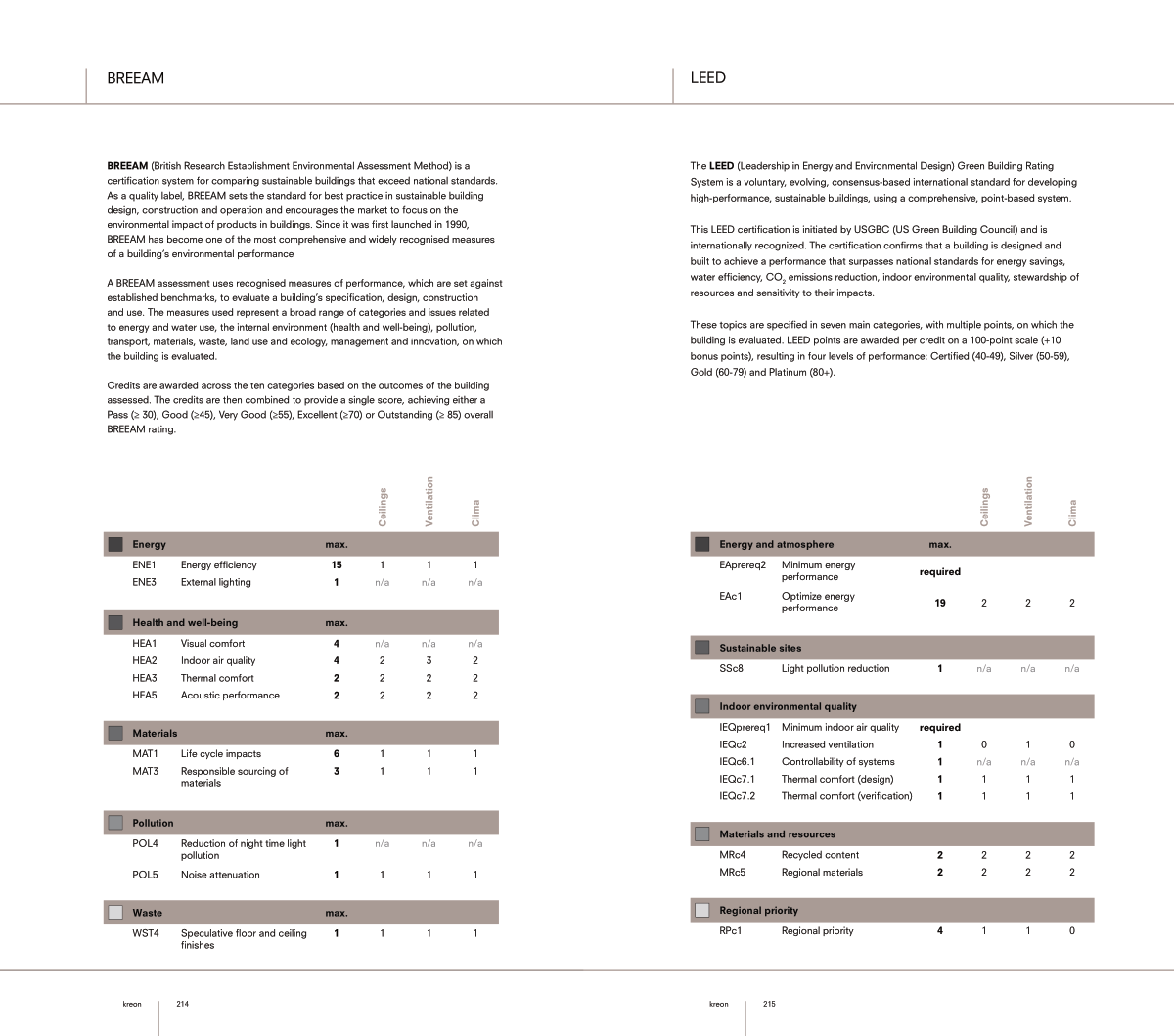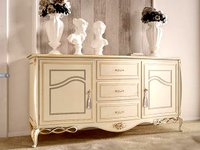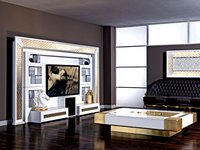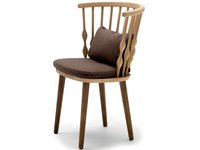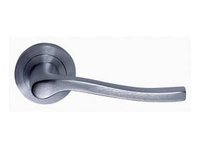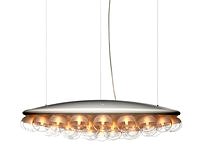214
kreon
215
kreon
BREEAM
Ceilings
Ventilation
Clima
Energy
max.
ENE1
Energy efficiency
15
1
1
1
ENE3
External lighting
1
n/a
n/a
n/a
Health and well-being
max.
HEA1
Visual comfort
4
n/a
n/a
n/a
HEA2
Indoor air quality
4
2
3
2
HEA3
Thermal comfort
2
2
2
2
HEA5
Acoustic performance
2
2
2
2
Materials
max.
MAT1
Life cycle impacts
6
1
1
1
MAT3
Responsible sourcing of
materials
3
1
1
1
Pollution
max.
POL4
Reduction of night time light
pollution
1
n/a
n/a
n/a
POL5
Noise attenuation
1
1
1
1
Waste
max.
WST4
Speculative floor and ceiling
finishes
1
1
1
1
The LEED (Leadership in Energy and Environmental Design) Green Building Rating
System is a voluntary, evolving, consensus-based international standard for developing
high-performance, sustainable buildings, using a comprehensive, point-based system.
This LEED certification is initiated by USGBC (US Green Building Council) and is
internationally recognized. The certification confirms that a building is designed and
built to achieve a performance that surpasses national standards for energy savings,
water efficiency, CO2 emissions reduction, indoor environmental quality, stewardship of
resources and sensitivity to their impacts.
These topics are specified in seven main categories, with multiple points, on which the
building is evaluated. LEED points are awarded per credit on a 100-point scale (+10
bonus points), resulting in four levels of performance: Certified (40-49), Silver (50-59),
Gold (60-79) and Platinum (80+).
Ceilings
Ventilation
Clima
Energy and atmosphere
max.
EAprereq2
Minimum energy
performance
required
EAc1
Optimize energy
performance
19
2
2
2
Sustainable sites
SSc8
Light pollution reduction
1
n/a
n/a
n/a
Indoor environmental quality
IEQprereq1
Minimum indoor air quality
required
IEQc2
Increased ventilation
1
0
1
0
IEQc6.1
Controllability of systems
1
n/a
n/a
n/a
IEQc7.1
Thermal comfort (design)
1
1
1
1
IEQc7.2
Thermal comfort (verification)
1
1
1
1
Materials and resources
MRc4
Recycled content
2
2
2
2
MRc5
Regional materials
2
2
2
2
Regional priority
RPc1
Regional priority
4
1
1
0
LEED
BREEAM (British Research Establishment Environmental Assessment Method) is a
certification system for comparing sustainable buildings that exceed national standards.
As a quality label, BREEAM sets the standard for best practice in sustainable building
design, construction and operation and encourages the market to focus on the
environmental impact of products in buildings. Since it was first launched in 1990,
BREEAM has become one of the most comprehensive and widely recognised measures
of a building’s environmental performance
A BREEAM assessment uses recognised measures of performance, which are set against
established benchmarks, to evaluate a building’s specification, design, construction
and use. The measures used represent a broad range of categories and issues related
to energy and water use, the internal environment (health and well-being), pollution,
transport, materials, waste, land use and ecology, management and innovation, on which
the building is evaluated.
Credits are awarded across the ten categories based on the outcomes of the building
assessed. The credits are then combined to provide a single score, achieving either a
Pass (≥ 30), Good (≥45), Very Good (≥55), Excellent (≥70) or Outstanding (≥ 85) overall
BREEAM rating.


